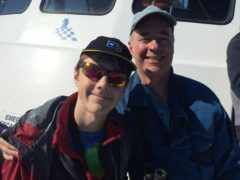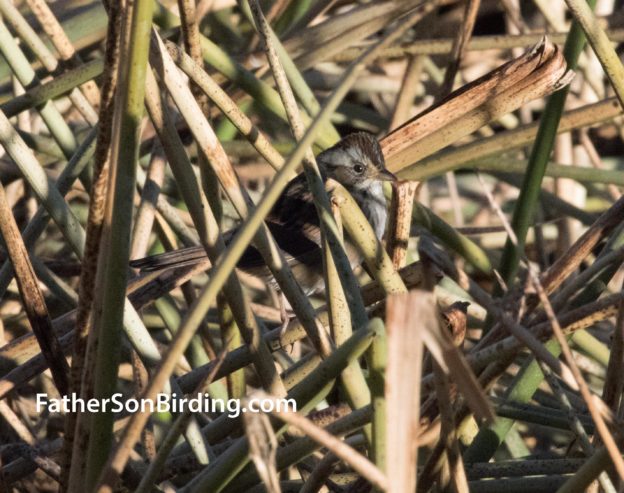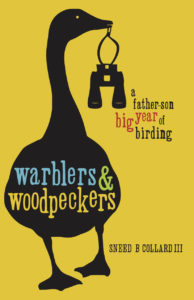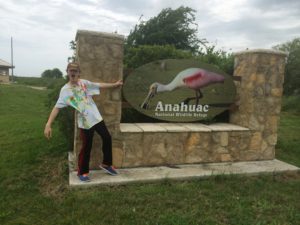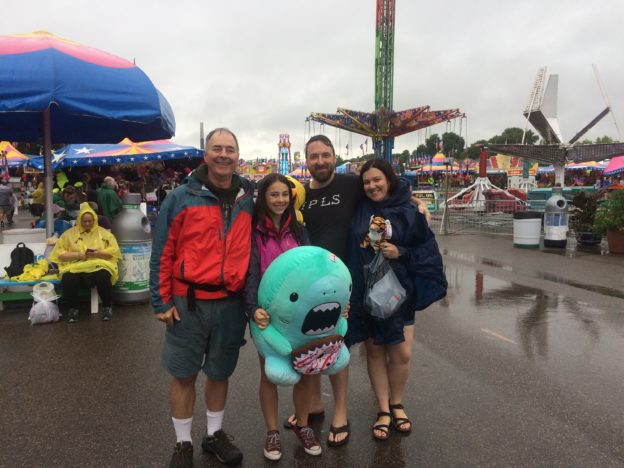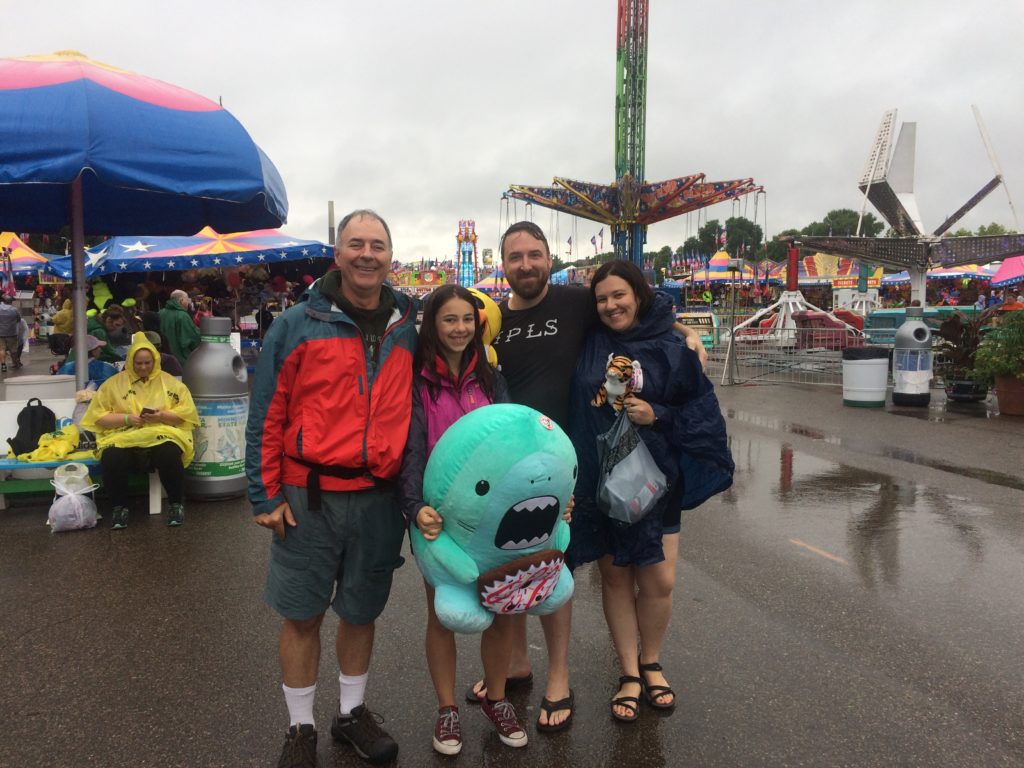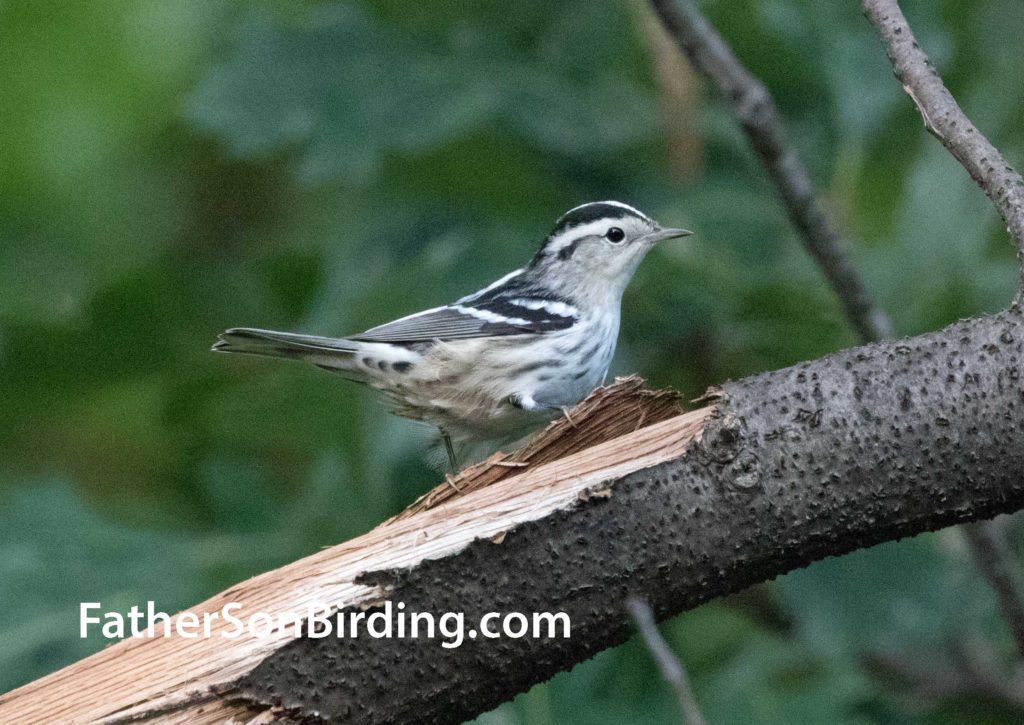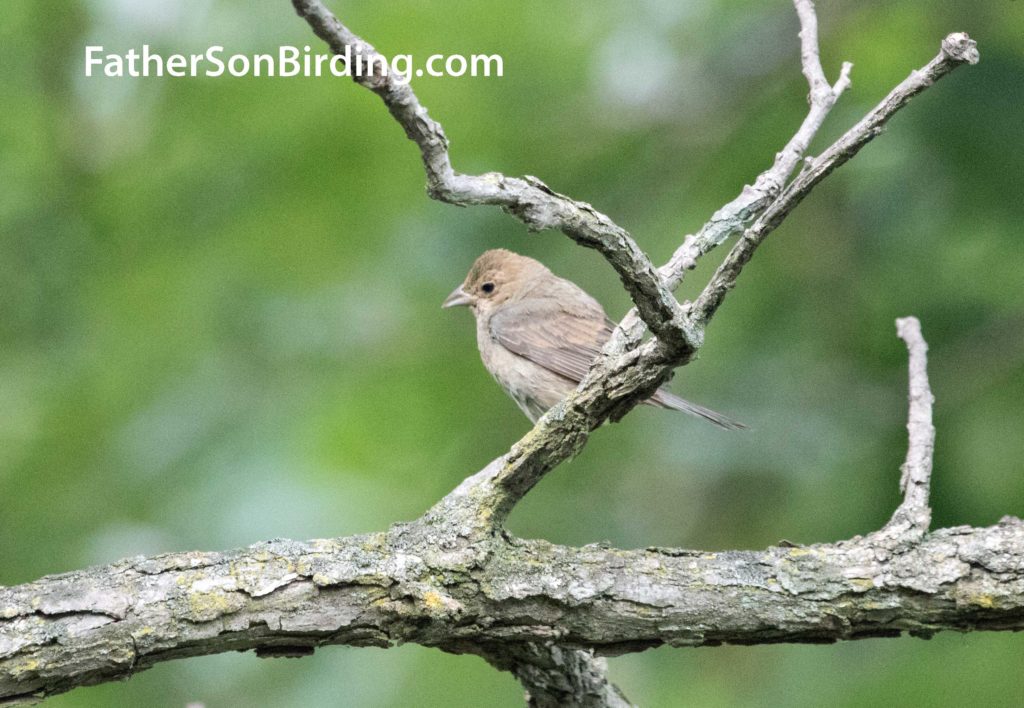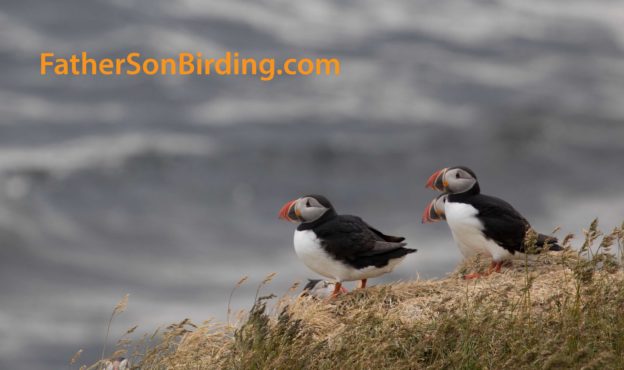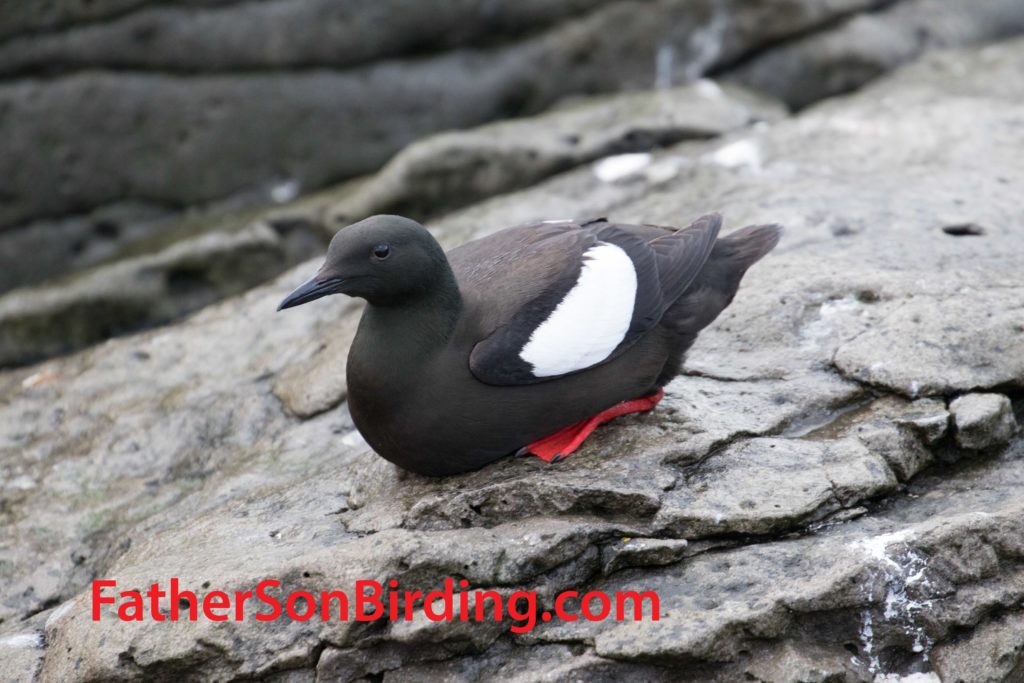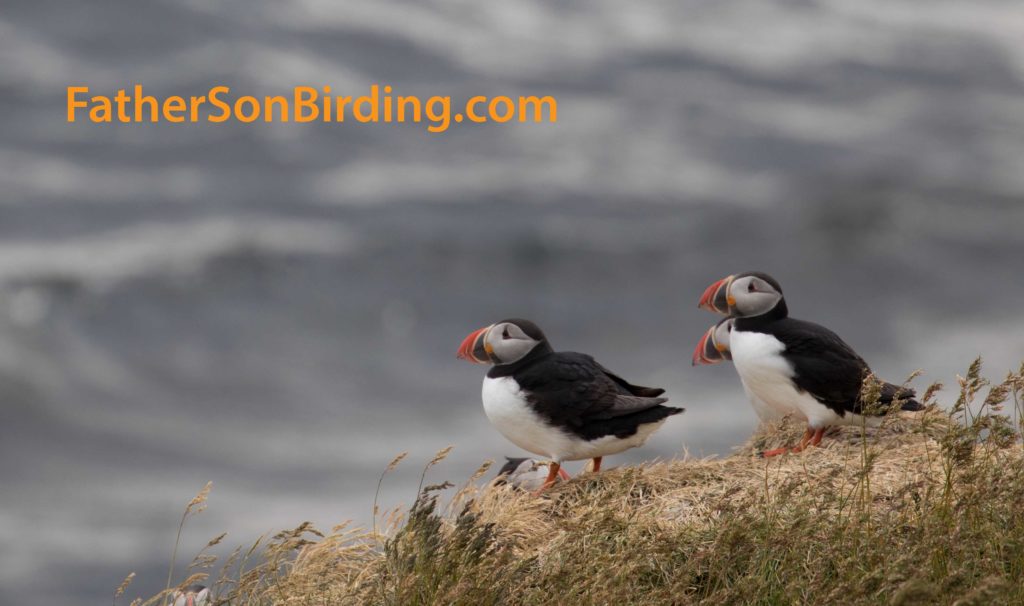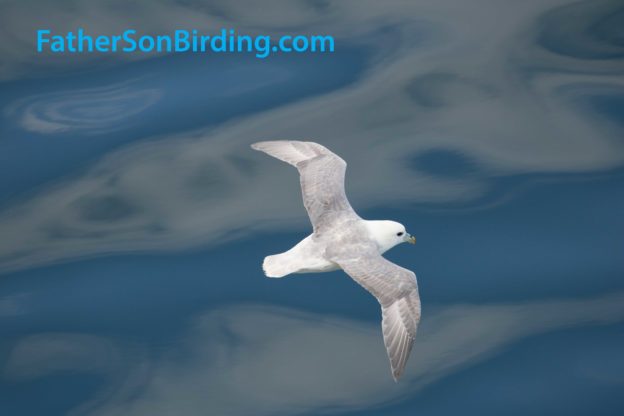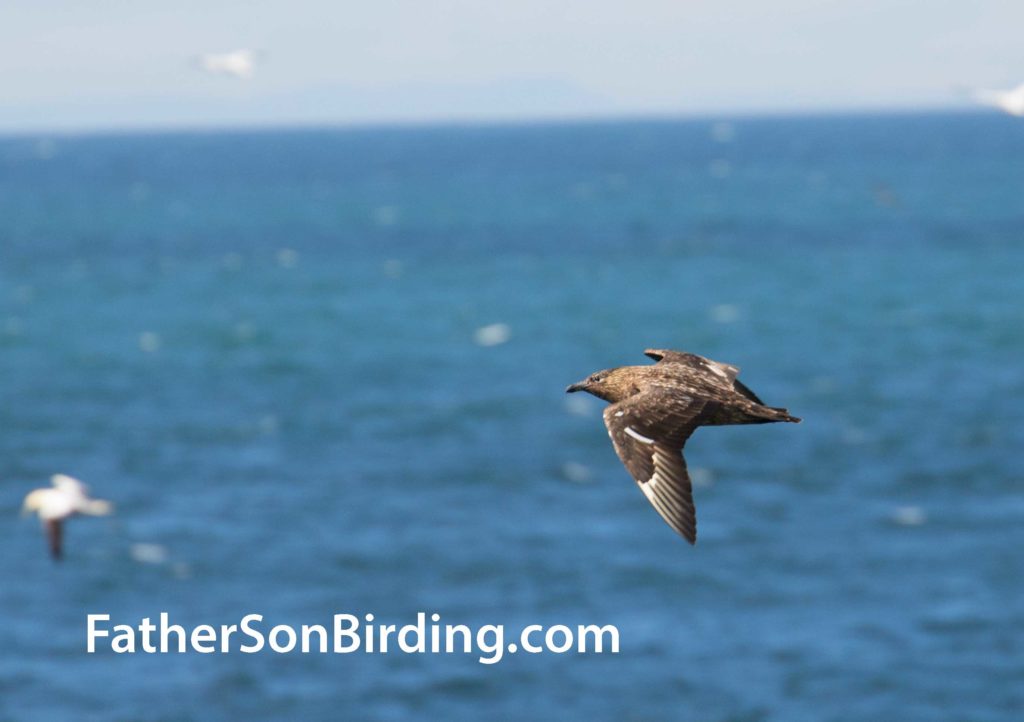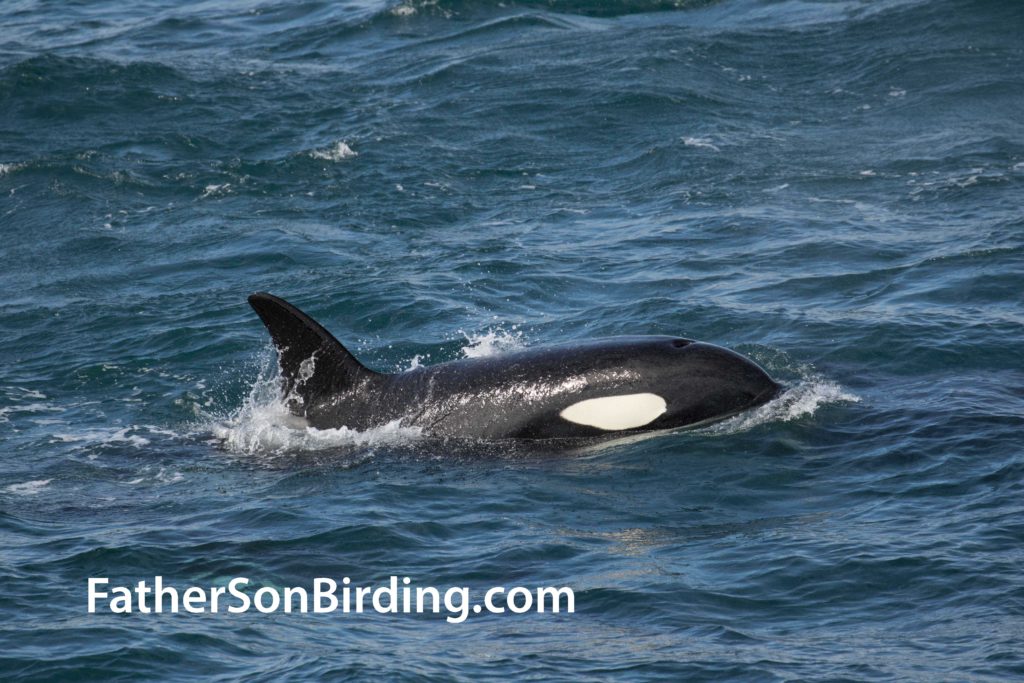Fall birding can be tough—at least in Montana.
I just completed a five-day return trip from Missoula to Billings, mainly to promote my new book Warblers & Woodpeckers, and I have only question: Where were the birds? Sure, I found some, but with much lower abundance and diversity than I expected. Even at places I’d seen a lot of fall species before, my best lists barely cracked a dozen. I would have notched more if I’d been better at identifying LBBs—Little Brown Birds. For instance, I took photos of a sparrow at Shiloh Conservation Area in Billings and glimpsed another intriguing group at Two Moons Park, but couldn’t ID any of them.
Lousy, no-good rotten sparrows.
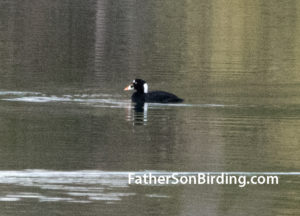
Our first-ever Montana Surf Scoter—to be followed by a second one (a female) a few days later.
I shouldn’t really complain since Braden and I have seen some wonderful birds the past few weeks. About two weeks ago, we saw our very first Montana Surf Scoter at one of our favorite birding spots, the gravel quarry. The bird was a stunning black male and just what such an ocean-loving bird was doing in Montana is a matter for debate. Since we started birding five years ago, however, scoters seem to be rare but reliable visitors.
A few days later, I was giving Braden a driving lesson in the parking lot of the Rocky Mountain Elk Foundation. After practicing parking thirty or forty times, I said, “C’mon. Let’s grab our gear and go see if any birds are around.” Not five minutes later, Braden spotted not one, but two White-throated Sparrows. Normally Eastern birds, these are real finds for Missoula and can only be spotted with diligent effort—and a lot of luck—during fall migration.
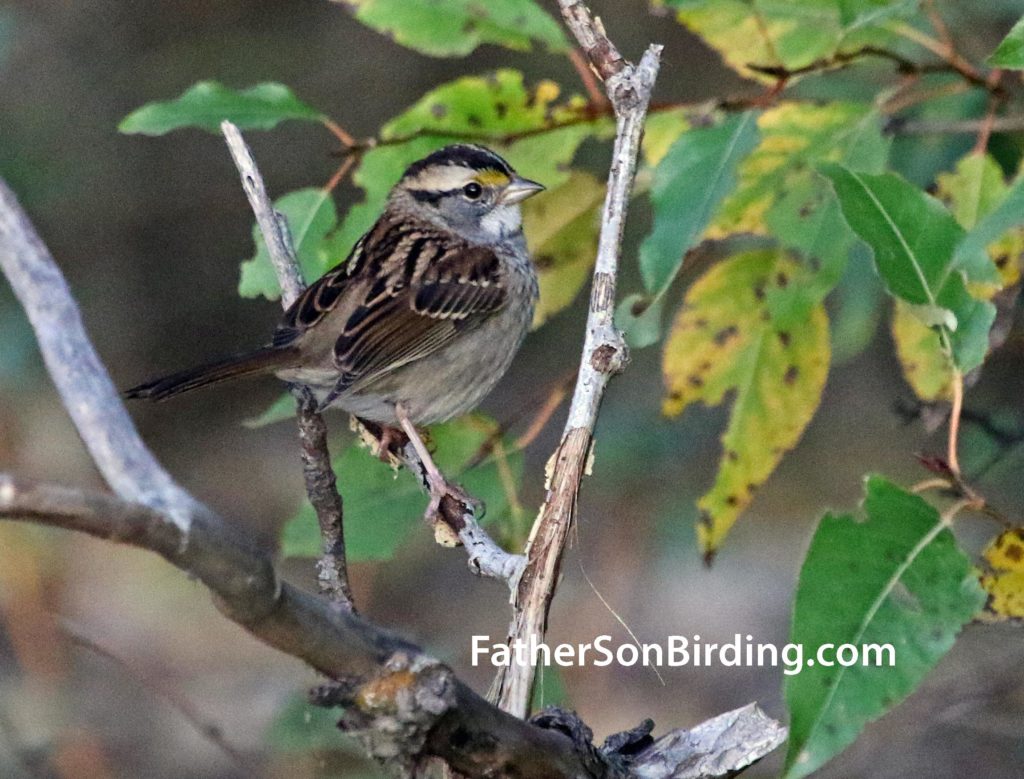
This was only our second location seeing White-throated Sparrows in Montana. A delightful surprise!
Alas, we’ve seen fewer warblers and other fall migrants than last fall, and that was reinforced on my trip across the state. I saw a smattering of good ducks (Redheads, Barrow’s Goldeneyes, and Ruddy Ducks) at Warm Springs, Three Forks ponds, and Lake Elmo State Park. I also spotted a Common Loon at Three Forks, and a nice variety of Western, Horned, Eared, and Pied-billed Grebes in most places I looked. But songbirds? They seemed to totally shun me on the trip.
When I returned home, I shared my photos with Braden. As we flipped through them, he nodded and politely murmured, “Nice. Uh-huh. Good one.”
Until I came to that mystery sparrow from Shiloh.
“Whoa. Wait a minute!” he exclaimed, opening Sibley’s. “Now I’m excited.”
“Why? What do you think it is?” I asked.
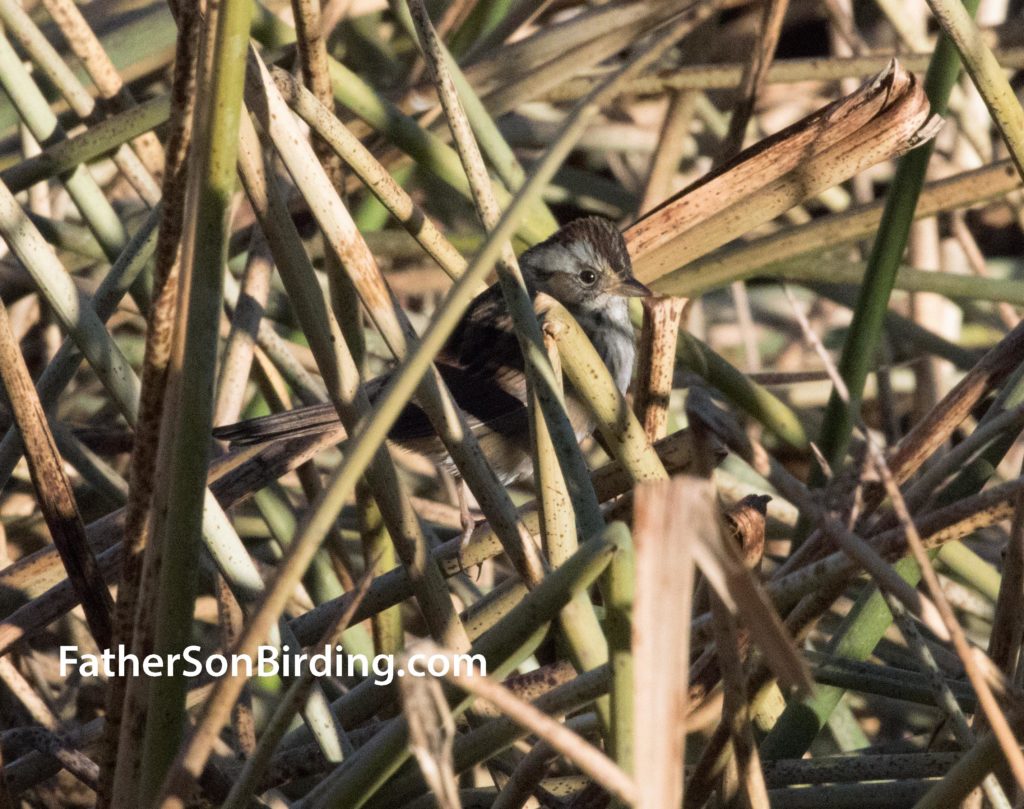
There are only about fifty records of Swamp Sparrows in Montana. Lucky me, this one decided to say hello!
“What do you think it is?” he countered.
“I couldn’t decide,” I said. “It looks kind of like a Song Sparrow, but doesn’t have the stripes. I thought maybe Lincoln’s, but it doesn’t have the orange colorings.”
Braden handed me Sibley’s. “I’m pretty sure it’s a Swamp Sparrow. They’re like, Code 4 for Montana.”
Now, my adrenaline was pumping too. “Really?”
We pored through the descriptions and compared it with my photos. Not only did the bird look identical to its description and illustration, I had found it in just the kind of habitat that Swamp Sparrows love.
Maybe fall birding in Montana isn’t so bad after all!
